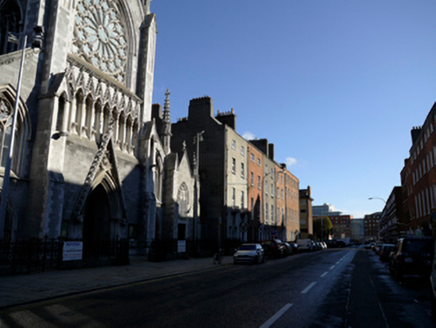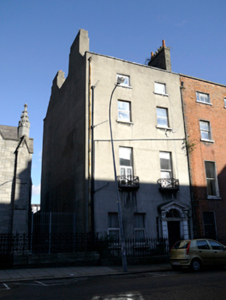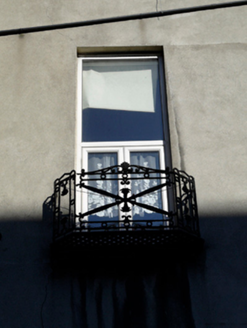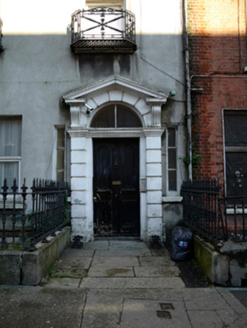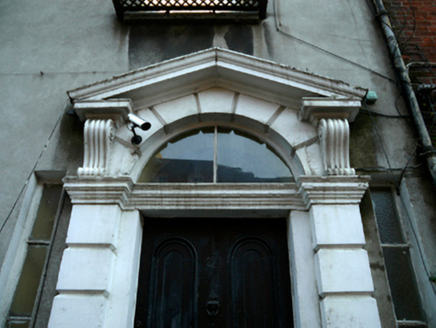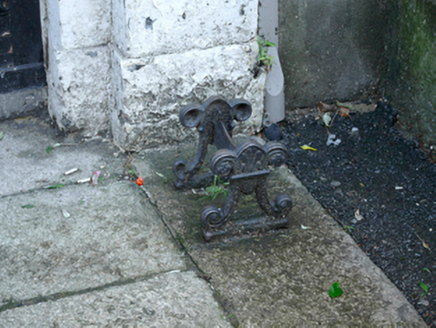Survey Data
Reg No
50010669
Rating
Regional
Categories of Special Interest
Architectural, Artistic
Original Use
House
In Use As
Apartment/flat (converted)
Date
1750 - 1770
Coordinates
315438, 234958
Date Recorded
25/10/2011
Date Updated
--/--/--
Description
End-of-terrace two-bay four-storey house over exposed basement, built c.1760, now in multiple occupancy. M-profile slate roof, pitched to front pile with two hipped sections to rear and two rendered chimneystacks rising from north gable. Roof hidden behind parapet wall with granite coping and cast-iron hopper and downpipe breaking through to north. Cement-rendered walls on granite plinth course over rendered basement walls. Red brick walls laid in English garden wall bond to rear elevation, cement rendered to the lower half. Cement render finish to north gable. Square-headed window openings with painted granite sills and replacement uPVC windows throughout. Cast-iron balconettes to first floor windows. Gauged-brick flat-arched window openings to rear elevation with yellow brick surrounds to upper floors. Round-headed door opening with pedimented painted stone doorcase. Late nineteenth-century replacement timber panelled door flanked by rusticated pilasters on plinth blocks supporting stepped lintel cornice with pair of scrolled console brackets supporting open pediment with voussoired vertically divided fanlight. Doorcase flanked by slender sidelights with three-pane sashes. Door opens onto granite platform with two decorative cast-iron bootscrapers, flush to front pavement and bridging basement. Platform and basement enclosed by decorative nineteenth-century cast-iron railings on granite plinth wall. Single-storey industrial structure to rear fronting onto Dominick Place.
Appraisal
This former townhouse is part of a terrace of five houses to the south of Saint Saviour’s Church. Once the finest Georgian streetscape in north Dublin, the majority of the street was demolished in the 1950s and 1960s. The land had been bought by a physician named Christopher Dominick in 1709, but the land was not developed until after his death in 1743 by his widow. Built by the stuccodore Robert West, the house has been cement rendered and replacement uPVC windows inserted, but nonetheless it is known to retain good Rococco plasterwork ceilings. The good doorcase and decorative balconettes enhance the appearance of the facade and the foreground, with stone plinth and cast-iron railings, adds visual interest and context. It forms part of a key stretch of a once impressive streetscape that provides a charming backdrop to Saint Saviour’s Church.
